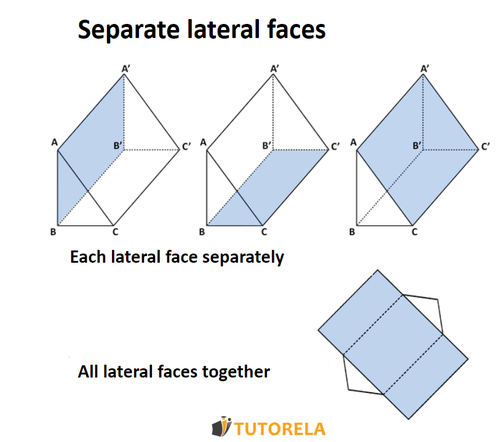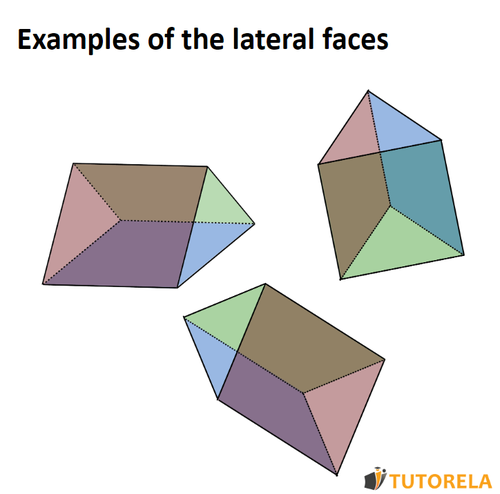The lateral faces of aright triangular prism are actually rectangles. More precisely, they are three rectangles. These rectangles "wrap" the prism. These rectangles can be different from each other, depending mainly on the bases of the prism(triangles). One side of each rectangle is actually equivalentthe height of the prism, while the other side is part of the base.
The number of lateral faces a prism has is equal to the number of sides the base polygon has. For example, if the base of the prism is a triangle, then it will have three lateral faces, if the base is a quadrilateral, it will have four lateral faces, and so on.
We use the different data about the lateral faces of the prism to calculate the area of the lateral surface as well as the area of the total surface of the prism.










